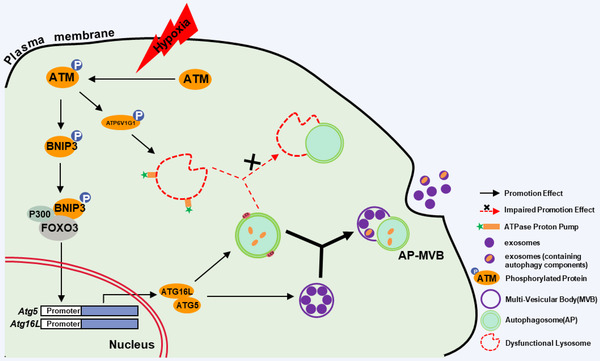FIGURE 10.

A schematic diagram for the role of oxidized ATM in hypoxic CAFs in inducing autophagy and EVs release. Oxidized ATM under hypoxia phosphorylates BNIP3 and ATP6V1G1. The phosphorylated BNIP3 increases the expression of ATG5 and ATG16L by recruiting P300 and FOXO3 to the promoter of Atg5 and Atg16L to promote formation of autophagosomes (APs) and multi‐vesicular bodies (MVBs). The phosphorylated ATP6V1G1 induces enhanced lysosomal pH to lead to dysfunctional lysosomes and impair fusion of APs and lysosome. APs tend to fuse with MVBs to form AP‐MVB rather than with dysfunctional lysosomes. The fusion of APs with MVB facilitates exosome release and related GPR64 enrichment in exosomes, thus fuelling the invasion of breast cancer cells
